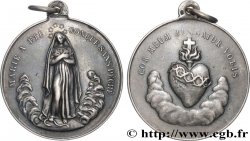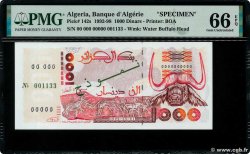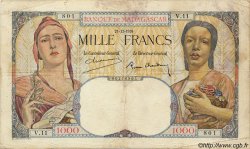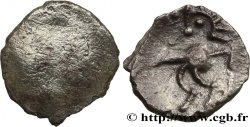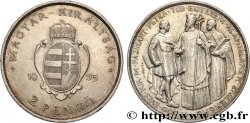Not available.
Item sold on our e-shop (2015)
Price : 3 500.00 €
Item sold on our e-shop (2015)
Price : 3 500.00 €
Type : Essai de 20 francs Turin, en cupro-nickel
Date: 1939
Mint name / Town : Paris
Metal : copper nickel
Diameter : 34,94 mm
Orientation dies : 6 h.
Weight : 17,04 g.
Edge : striée
Rarity : R3
Coments on the condition:
Exemplaire parfait mais surface terne quoique avec de jolis reflets au droit. Une petite tache noire sur le cou
Obverse
Obverse legend : REPUBLIQUE - FRANÇAISE.
Obverse description : Tête de la République à droite, coiffée d'un bonnet phrygien lauré ; signé P. TURIN sous le buste.
Reverse
Reverse legend : 20 / FRANCS / 1939 / LIBERTE / EGALITE / FRATERNITE / ESSAI.
Reverse description : Entre deux épis de blé verticaux.
Commentary
Cet essai n’est pas répertorié dans les principaux ouvrages de référence si ce n’est Gadoury qui indique “épreuve en cupro-nickel”. On notera que le diamètre est, contrairement aux autres essais de la collection Pierre, pratiquement identique au standard émis. Le millésime de cet essai, 1939, est particulièrement intéressant ; la proximité de la guerre a probablement suggéré des essais en métal non précieux, sans comprendre que, durant une guerre moderne, les métaux stratégiques sont aussi des métaux précieux.
This test is not listed in the main reference works except for Gadoury who indicates “cupro-nickel proof”. It should be noted that the diameter is, unlike the other tests in the Pierre collection, practically identical to the issued standard. The vintage of this test, 1939, is particularly interesting; the proximity of the war probably suggested tests in non-precious metal, without understanding that, during a modern war, strategic metals are also precious metals
This test is not listed in the main reference works except for Gadoury who indicates “cupro-nickel proof”. It should be noted that the diameter is, unlike the other tests in the Pierre collection, practically identical to the issued standard. The vintage of this test, 1939, is particularly interesting; the proximity of the war probably suggested tests in non-precious metal, without understanding that, during a modern war, strategic metals are also precious metals








 Report a mistake
Report a mistake Print the page
Print the page Share my selection
Share my selection Ask a question
Ask a question Consign / sell
Consign / sell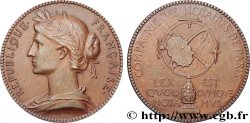
 Full data
Full data